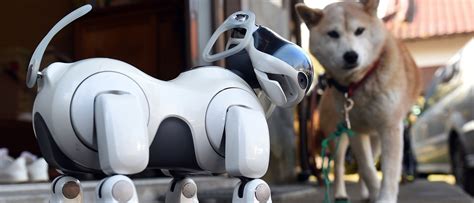Introduction
In the rapidly evolving landscape of technology, pet care has not been left behind. The convergence of robotics and automation is revolutionizing the way we interact with and care for our beloved companions. This article explores the cutting-edge advancements in pet robotics and automation, highlighting their benefits, applications, and future prospects.

1. Smart Feeders: Automating Nutrition
Smart feeders are a cornerstone of pet automation. These devices dispense food at preset times and quantities, ensuring that pets are fed regularly and portion-controlled. Some models feature WiFi connectivity, allowing remote monitoring and adjustment of feeding schedules. According to the American Pet Products Association (APPA), the market for automatic pet feeders is projected to reach $1.5 billion by 2025.
2. Litter-Box Robots: Eliminating Dirty Work
Litter-box cleaning is a dreaded chore for many pet owners. Litter-box robots automate this task, using sensors to detect waste and scoop it into a separate compartment. Some models even self-clean the entire box, eliminating the need for manual scooping altogether. The global market for litter-box automation technologies is estimated to reach $1.2 billion by 2025 (Grand View Research).
3. Self-Cleaning Water Bowls: Maintaining Hydration
Clean water is essential for pet health, but keeping bowls filled and free from debris can be a hassle. Self-cleaning water bowls use filtration systems to remove impurities, ensuring a constant supply of fresh water for pets. The convenience of these devices is increasing their adoption, with the market size expected to approach $1 billion by 2025 (Transparency Market Research).
4. Robotic Pet Toys: Enhancing Entertainment
Robotic pet toys provide companionship, stimulation, and exercise for pets. They can be programmed with a range of activities, from fetch to hide-and-seek. Some toys feature artificial intelligence (AI), allowing them to interact with pets and respond to their behavior. The market for pet robotics is expected to grow at a compound annual growth rate (CAGR) of 10.5% from 2022 to 2030 (Statista).
5. GPS Trackers: Peace of Mind for Owners
GPS trackers for pets give owners peace of mind by allowing them to monitor their pet’s whereabouts. These devices can be attached to a collar or harness and transmit the pet’s location in real-time. Some trackers also feature activity tracking and geofencing capabilities to alert owners when their pet leaves a designated area. The global GPS pet tracker market is projected to reach $2.5 billion by 2025 (Technavio).
6. Pet Monitoring Cameras: Remote Observation
Pet monitoring cameras allow owners to watch their pets remotely. These cameras can be equipped with features such as motion detection, night vision, and two-way audio, enabling owners to interact with their pets from afar. The market for pet monitoring cameras is growing rapidly, with the APPA estimating that 60% of pet owners will use such devices in the near future.
Benefits of Pet Robotics and Automation
- Convenience: Automation saves owners time and effort by performing repetitive tasks such as feeding, cleaning, and monitoring.
- Improved Health and Well-being: Automated feeding and water bowls ensure that pets are fed and hydrated regularly, while litter-box robots and monitoring devices help maintain a cleaner and healthier environment.
- Increased Safety: GPS trackers and pet monitoring cameras provide peace of mind by allowing owners to monitor their pet’s location and activity.
- Enhanced Companionship: Robotic pet toys and monitoring cameras can provide companionship and entertainment for pets, especially those that spend extended periods alone.
Applications of Pet Robotics and Automation
Pet robotics and automation have a wide range of applications in both residential and commercial settings:
Residential:
- Smart feeders, litter-box robots, self-cleaning water bowls, and robotic pet toys for home pets
- Pet monitoring cameras for pet owners who travel or work long hours
Commercial:
- Automated feeding systems and litter-box cleaning in animal shelters and boarding facilities
- GPS trackers for tracking dogs and other working animals
- Pet monitoring cameras for observing animals in research facilities and wildlife sanctuaries
Future Prospects: The “Zotomation” Revolution
The convergence of pet robotics and automation is expected to continue to evolve in the coming years, leading to even more advanced and innovative products. One emerging trend is the concept of “zotomation,” which refers to the use of automation and robotics to enhance the lives of all animals, including pets, livestock, and wildlife.
Conclusion
Pet robotics and automation are rapidly transforming the way we care for and interact with our beloved companions. From smart feeders and litter-box robots to GPS trackers and pet monitoring cameras, these technologies are providing increased convenience, improved health and well-being, enhanced safety, and companionship for pets. As technology continues to advance, we can expect even more innovative and groundbreaking applications in the field of pet care.





















